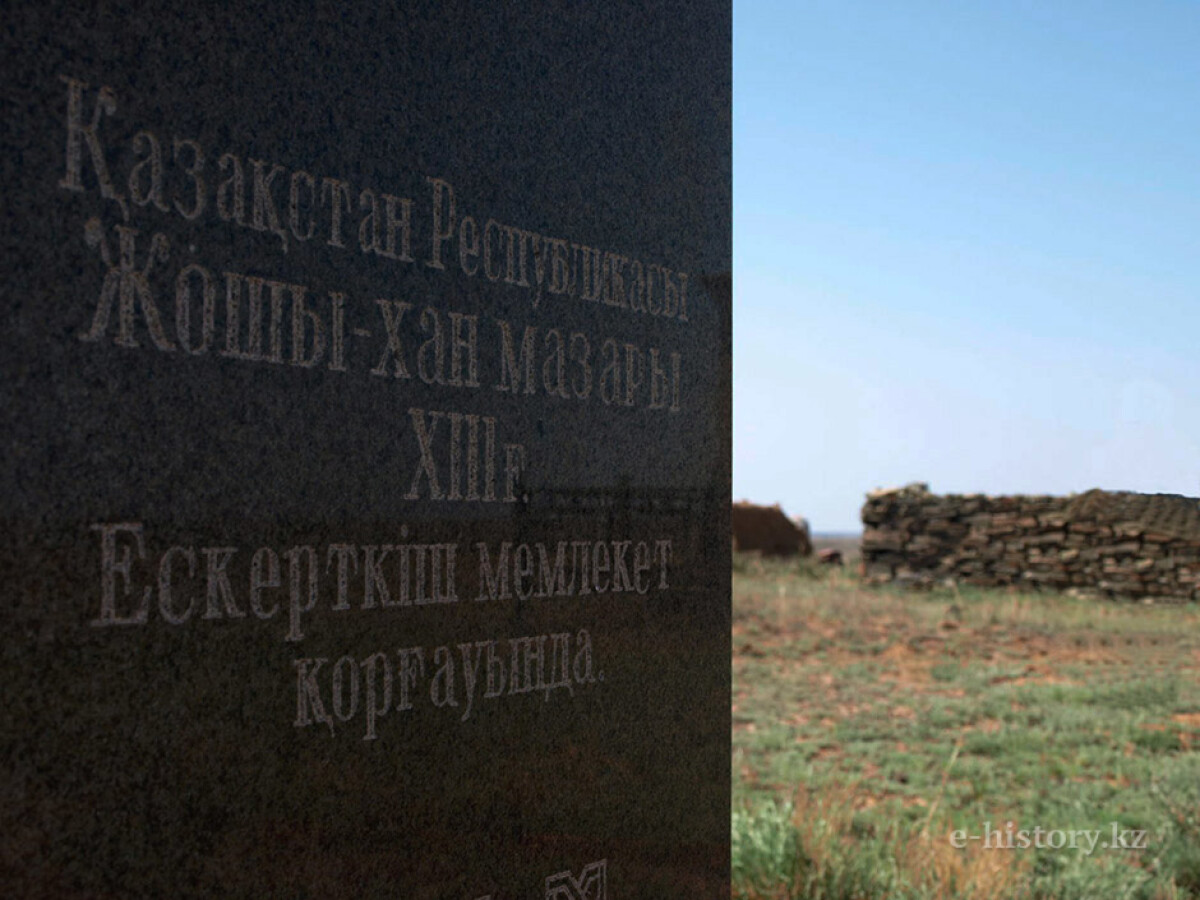
When Genghis Khan separated the possession between sons, Dzhuchi Khan received the Kazakh steppe. Dzhuchi during govern in the territory of the modern Kazakhstan respected the local population, its language and culture. Also he was known for his good attitude towards his subordinates.
It is confirmed by data of the Persian historian who lived in the 13th century, Abu Omar Minjadzh ad-Din Omar ibn Siradzh ad-Dinal-Dzhuzd Zhani. In the work «Taba kad-and-nasiri» he wrote the following: «The khan so strongly loved Dzhuch kipchak that he never clouted the son of a Kipchak or the Mongol in Khwarezm».
Dzhuchi Khan was the ancestor of the Kazakh khans. When he died, his body was buried on Ulytau’s land. The mausoleum of Dzhuchi Khan remained up to now. It locates in 50 kilometers to north-east from the city of Zhezkazgan on the bank of Kengir River.
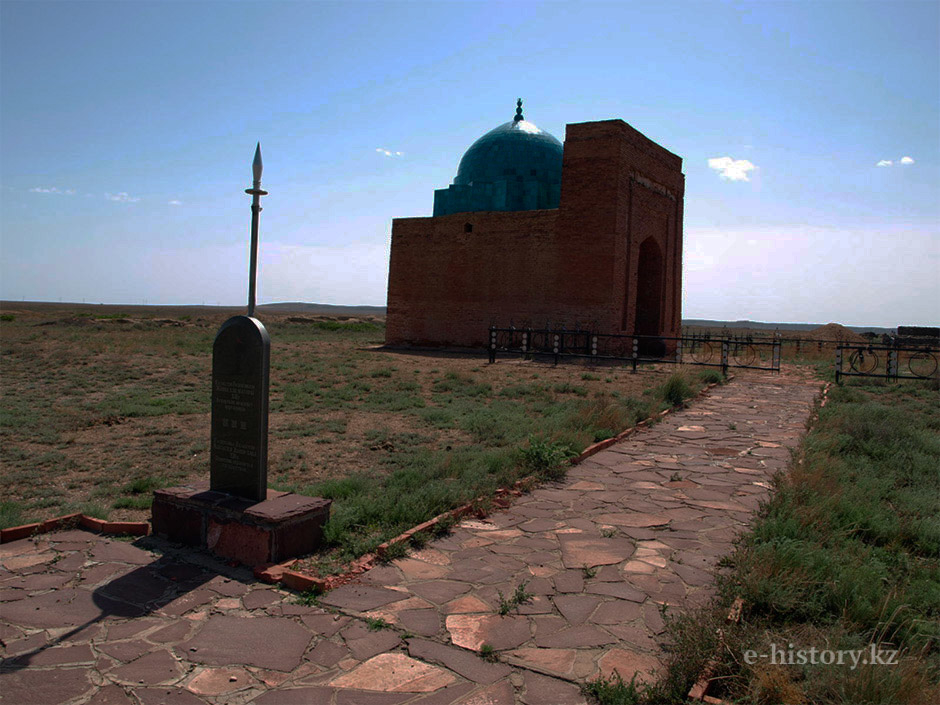
Appearance of Dzhuchi Khan’s mausoleum
The texts, which remained on mausoleum walls, were left by all tribes which were subordinate of Dzhuchi Khan: Oguz, Argyn, Kipchak, Kerei, Nayman, Konyrat and Kangly. According to the tradition the mausoleum could not be built earlier than the annual funeral diner carried out to the memory of died ones. Dzhuchi Khan died in 1227, the mausoleum in his honor was built in 1228.
The mausoleum of Dzhuchi Khan belongs to portal and dome constructions. According to architectures’ ideas, it has a rectangular form. It is constructed of the burned brick and plaster. The area of the mausoleum takes 9, 55 and 7, 25 meters. The majestic portal decorates the mausoleum.
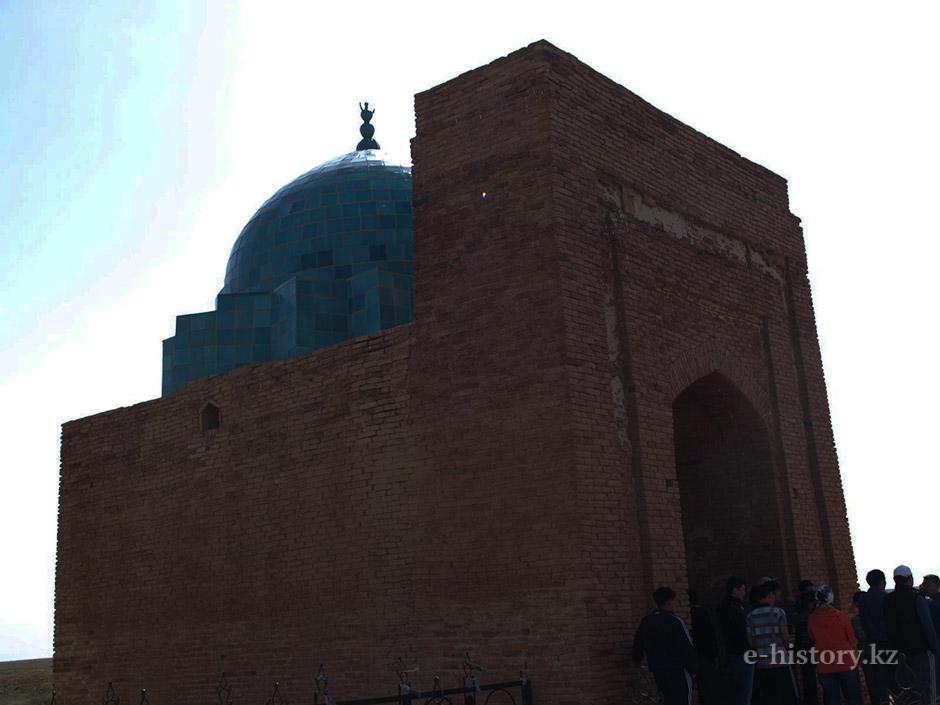
Front arch of the mausoleum — cuspate, and it has very strong sides, therefore can withstand big weight.

The sides of a portal have a pattern which is very similar on baskur of yurts. Baskur – a band from wool 10 centimeters wide and more which fasten to a kerege (wooden grid that forms round walls of yurt). Tiled bricks which were used for a pattern have the size of 45 and 45 centimeters. In addition to patterns there was a text on these bricks.
In 1911 one of prominent governors of the Atbasar district collected the above described bricks and transferred them to the museum. The upper part of a portal is similar to a parapet, and its bottom forms a frieze of residuals of bricks. Monument of history and architecture also is the ancient structure of the museum of Dzhuchi of the khan.
From the inside, as if book shelves, rise up two floors which form the high calotte leaning on a six-sided drum. The internal calotte, which height of 7 meters, leans on "shelves". Height of an external calotte makes 8 meters.
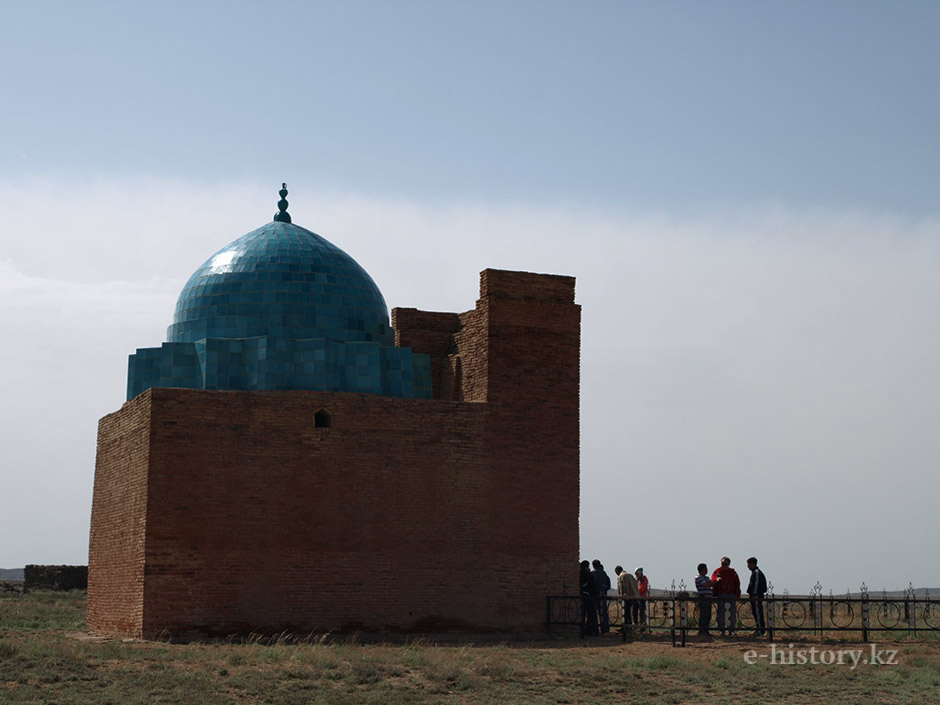
The ancient structure of Dzhuchi Khan’s museum is also the monument of history and architecture. From inside, like book shelves, two floors, which form the high calotte leaning on a six-sided drum, are rise up. The internal calotte, which height is 7 meters, leans on «shelves». Height of an external calotte is 8 meters.
All these findings tightly intertwine with a legend of death of Dzhuchi Khan which formed the basis «Hromoi kulan» («Lame onager») kuy (the type of the musical piece).
«Dzhuchi, the son of the Great Khan of the Golden Horde, — hunting on wild onager, was so interested in archery that the group of the subordinates who accompanied him remained far behind. He could masterly shoot straight to onagers. The leader of herd of wild onagers known as „Lamae Kulan“, the strong and courageous, not afraid even of wolves (once in fight with gray predators his foot was injured), unexpectedly was torn and snatched on the hunter. The attack of Lame Kulan was so impudent and furious that Dzhuchi fell from a horse, injured himself in the neck and died right there. The herd of kulans, released from chasing, freely ran away in steppe and ahead of all was the leader Lame Kulan», — according to the legend.
Stories about how khan was buried are still on word of mouth. Some people say that he was buried without hands. According to other version, only one his hand or even a little finger was found.
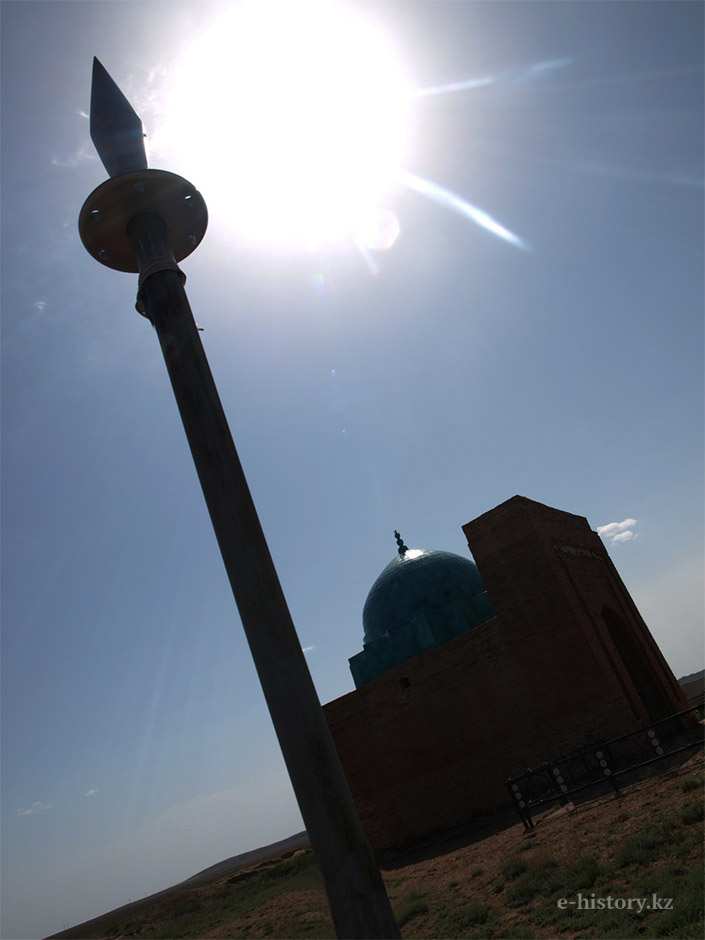
The second grave belongs to the senior wife of Dzhuchi. Her name was Bektumysh. She was the daughter of the younger brother Togyryl Khan, who was the leader of kereis’ khanate. Her grave is covered with bricks on which with Arab ligature was several times written the word ykpal, which means «influence».
The mausoleum of Dzhuchi Khan is a historical and cultural monument, and it is protected by the state.
Olzhas BERKINBAYEV
Any use of photos is forbidden without written permission of edition of the portal and their author Maxim Rozhin.
